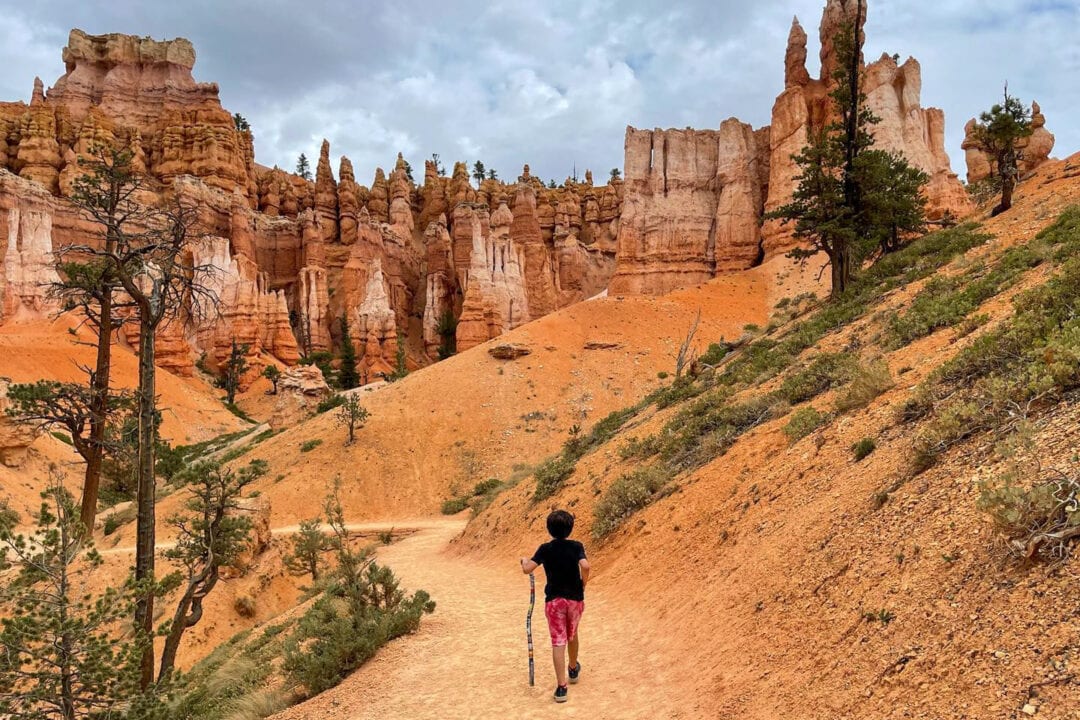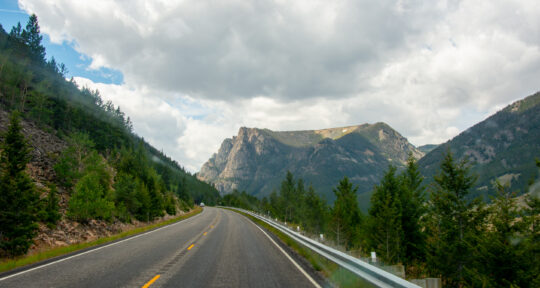It wouldn’t be a family vacation without at least one meltdown. Exhausted tots whining and parents an inch away from snapping as they press forward with unreasonable speed, all teetering on the edge of self-destruction—it’s a recipe for the perfect storm. While it’s natural to want to stick to your carefully crafted travel plans and make the most of every moment, anyone who’s experienced a similar scene knows it can lead to everyone feeling dissatisfied in the end.
Hiking with kids can sometimes feel like this, especially if you have a little one who’s less than enthused about spending time in the great outdoors. But with the right approach, you can avoid feeling overwhelmed and get the whole family excited about going on a wilderness trek.
Whether you’ve yet to take your toddler on their first vacation or are trying to add more active adventures into your fourth grader’s upcoming national park visit, follow these six tips to find success on your next hiking adventure.

1. Start young (or small)
Like anything you hope to make a part of your child’s routine, it’s best to introduce hiking at a young age. Add short outdoor adventures into your travels as early as possible, even if that means bringing along a baby carrier to tote little ones who are just starting to walk. Or, if your kids are already a bit older and are unsure about hiking, start by looking for short treks close to home to make this transition easier.
Another option is to look for trails that allow for free roam exploration without a set endpoint in mind. The hoodoos at Goblin Valley State Park in Utah are a great experience for any skill level. Kids can roam as much as they’d like with no set trails, and the landscape acts as a sort of playground. Garden of the Gods in Colorado Springs is another example that allows for endless hours of free play.
2. Choose your words carefully
As a parent, you already know to adjust your language when coercing your children into trying something new, and we’ve all been less than transparent when sharing recipe ingredients with our kiddos come dinnertime. The same approach also holds true when encouraging your child to head outdoors. For many children the word “hike” is a negative term, so instead try telling them you’re going for a “walk” or that you’re “exploring.” My son enjoys climbing rocks, so I like to say we’re going “bouldering.” Similarly, your child might enjoy geocaching or stacking stones as you roam, and these terms are also great motivators to help get them out on the trail. A small change in wording can make a big difference in how they think about the excursion.
No matter what language you use, it’s best to focus on hyping up the places you’re going to explore, with less emphasis on the amount of work involved in getting there. Share what the payoff will be and keep their eyes on the prize.

3. Research the route
On any hike, it’s important to pack basics such as water, snacks, sunscreen, bug spray, and first aid supplies. But, equally important in your preparations is to research the terrain and elevation gain of your hikes. These details can be found online, and many park maps also share this information. Often, hikes are rated in plain terms such as easy, moderate, or difficult, and it’s important to take your child’s experience and skill level into account when planning a hiking route.
Looking only at the length of a trail can sometimes be misleading. For example, the seemingly short 1.6-mile Cathedral Spires Trail at Custer State Park in South Dakota turns into a rock scramble at the end. This climbing challenge, paired with 90-degree temperatures, left my 7-year-old feeling overwhelmed. A week later, we tackled the Avalanche Lake Trail at Glacier National Park in Montana, which is a significantly longer 5.9-mile trek. However, the well-worn trail and ample shade made this journey relatively easygoing for my kiddo. Both trails were marked moderate, but doing some terrain research would have helped me determine which one was right for my family.
4. Be realistic and willing to adapt
Even the best-laid plans can be foiled by unforeseen circumstances, so it’s important to be flexible with your schedule. A night of poor sleep can be especially tough for little ones. Traffic delays and weather are always unknown factors. No matter what happens, maintain a realistic vision of what your child can accomplish given the circumstances and be prepared to either abandon your plans entirely or modify them. Don’t get your heart set on something that may not be successful, and always have a family-friendly backup plan ready for just such an occasion.
Too many times I’ve seen a family attempt to press on with their plans despite less-than-ideal circumstances—and it rarely ends well. Pushing your child too hard to continue on when they’re not able or willing to do so could ruin your chances at getting them interested in future hikes. Instead, if there’s a particular hike that’s at the top of your wish list, make sure to schedule it early in your trip so that you can give it another chance later in the week if the first attempt doesn’t go according to plan.

5. Go at their pace and make it fun
No matter how experienced a hiker you are, be sure to go at your child’s pace. This may mean you’re unable to complete the 5.2-mile Window Trail at Texas’ Big Bend National Park, and instead tackle the much more manageable 1.5-mile Santa Elena Canyon Trail. Everyone will be better motivated if you slow down, give plenty of chances to rest, offer encouragement, and reinforce victories along the way. Enjoy the journey as you take time to stop and smell the roses, set up a picnic lunch, or skip stones on a lake.
To help the time pass more easily, enlist your child in a task as you sightsee. Make a scavenger hunt and search for animal tracks, wildflowers, or different types of birds. Occupy your kids with activities such as completing a Junior Ranger book or learning about local culture (through initiatives like North Carolina’s Cradle of Forestry program). These educational distractions help keep kids engaged and focused, while also taking their minds off their tired legs.
Related: Everything you need to know about the Junior Ranger program

6. Reward the sweet successes
As adults, the beautiful scenery is our reward for an epic hike, but your child may need a bit more incentive. Consider offering smaller explorers a prize to look forward to at the end of your journey. Tempt them with a token, such as a pressed penny, to commemorate their triumph. Or grant them a special treat of ice cream or pizza once they cross the finish line. A small memento will go a long way to keeping them motivated.
Consider choosing an item that allows them to mark the places they’ve visited. My son has a walking stick that he adorns with stickers to celebrate each successful hike. The stickers are inexpensive, but when added to his walking stick it makes for a stunning showpiece of his accomplishments.









